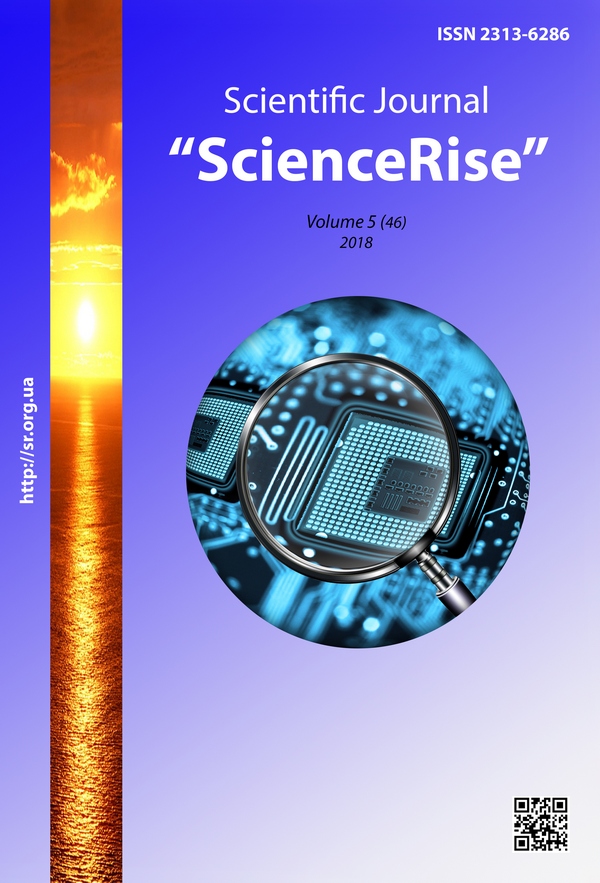The innovative technologies of natural products for healthy nutrition – sauce-dressing with using cryosupplements from spicy vegetables
DOI:
https://doi.org/10.15587/2313-8416.2018.131560Keywords:
functional products, health nutrition, sauces-dressing, secondary milk raw materials, finely divided cryopuree, spicy vegetables, innovative cryotechnology, natural, nanoadditives, restaurant businessAbstract
The technologies of natural functional products for health nutrition are developed – sauces-dressing on the basis of secondary milk raw materials with the addition of finely divided cryopuree from spicy vegetables (roots of celery, ginger, horseradish and garlic, which has been obtained by innovative cryotechnology, which allows to obtain natural vegetable nanoadditives from spicy vegetables that are high in BAS in an easily digestible form (1,7...3,2 times more than in fresh raw materials), which are recommended for use on enterprises of restaurant business
References
Global Strategy on Diet, Physical Activity and Health: report of a Joint WHO/FAO/UNU. Expert Consultation (2010). Geneva: World Healt Organization.
Pavliuk, R. Yu., Poharska ,V. V., Radchenko, L. O., Pavliuk, V. A. et. al. (2017). Novyi napriamok hlybokoi pererobky kharchovoi syrovyny. Kharkiv, 380.
Tutel'yan, V. A., Razumov, A. N., Vyalkov, V. I. (2010). Nauchnye osnovy zdorovogo pitaniya. Moscow: Panorama. Nauka i praktika, 816.
Pavliuk, R. Yu., Poharska, V. V., Radchenko, L. O., Yurieva, O. O., Hasanova, A. E., Abramova, T. S., Kolomiiets, T. M. (2015). The development of technology of nanoextracts and nanopowders from herbal spices for healthful products. Eastern-European Journal of Enterprise Technologies, 3 (10 (75)), 54–59. doi: 10.15587/1729-4061.2015.43323
Tuan Pham, Q. (2014). Freezing time formulas for foods with low moisture content, low freezing point and for cryogenic freezing. Journal of Food Engineering, 127, 85–92. doi: 10.1016/j.jfoodeng.2013.12.007
Pavliuk, R. Yu., Poharskyi, O. S., Kaplun, A. A., Losieva, S. M. (2015). Developing the cryogenic freezing technology of chlorophyll-containing vegetables. Eastern-European Journal of Enterprise Technologies, 6 (10 (78)), 42–47. doi: 10.15587/1729-4061.2015.56111
Evans, J. (2016). Emerging Refrigeration and Freezing Technologies for Food Preservation. Innovation and Future Trends in Food Manufacturing and Supply Chain Technologies, 175–201. doi: 10.1016/b978-1-78242-447-5.00007-1
Tu, J., Zhang, M., Xu, B., Liu, H. (2015). Effects of different freezing methods on the quality and microstructure of lotus (Nelumbo nucifera) root. International Journal of Refrigeration, 52, 59–65. doi: 10.1016/j.ijrefrig.2014.12.015
James, S. J., James, C. (2014). Chilling and Freezing. Food Safety Management, 481–510. doi: 10.1016/b978-0-12-381504-0.00020-2
Pavlyuk, R., Pogarska, V., Mikhaylov, V., Bessarab, O., Radchenko, L., Pogarskiy, A. et. al. (2018). The study of bas complex in chlorophyllcontaining vegetables and development of healthimproving nanoproducts by a deep processing method. Eastern-European Journal of Enterprise Technologies, 2 (11 (92)), 48–56. doi: 10.15587/1729-4061.2018.127158
Downloads
Published
Issue
Section
License
Copyright (c) 2018 Viktoriya Pogarska, Raisa Pavlyuk, Ludmila Radchenko, Ekaterina Dudnyk, Anna Radchenko, Leonida Bilenko, Tatyana Kotuyk

This work is licensed under a Creative Commons Attribution 4.0 International License.
Our journal abides by the Creative Commons CC BY copyright rights and permissions for open access journals.
Authors, who are published in this journal, agree to the following conditions:
1. The authors reserve the right to authorship of the work and pass the first publication right of this work to the journal under the terms of a Creative Commons CC BY, which allows others to freely distribute the published research with the obligatory reference to the authors of the original work and the first publication of the work in this journal.
2. The authors have the right to conclude separate supplement agreements that relate to non-exclusive work distribution in the form in which it has been published by the journal (for example, to upload the work to the online storage of the journal or publish it as part of a monograph), provided that the reference to the first publication of the work in this journal is included.

